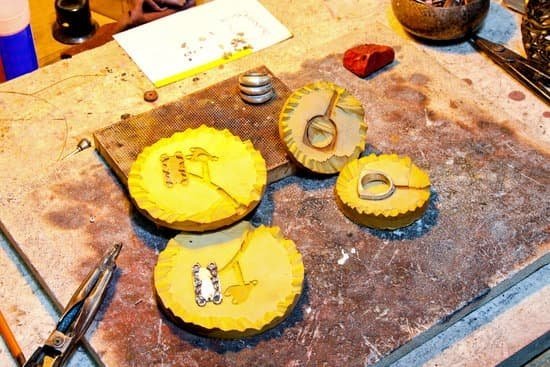Diamonds have long been admired and desired for their unparalleled beauty and sparkle. They are traditionally associated with luxury jewelry and symbolize eternal love and commitment. However, diamonds possess a multitude of remarkable properties that extend far beyond their use in adornments.
In fact, diamonds find applications in various industries and cutting-edge technologies due to their exceptional hardness, durability, and unique chemical structure. This blog post aims to explore two fascinating uses of diamonds that go beyond the world of jewelry, uncovering their potential in areas such as industrial applications, high-end engineering, medical advancements, scientific research, cutting-edge electronics, energy storage, and even the realm of future possibilities.
In industrial applications, diamonds play a pivotal role due to their outstanding hardness. Being the hardest naturally occurring material on Earth, diamonds are utilized extensively in industries like construction, aerospace, and mining. These precious gemstones are incorporated into saw blades for cutting through dense materials like concrete or stone with ease.
Diamond-coated cutting tools also facilitate precision cutting in industries where accuracy is crucial. Additionally, drill bits enhanced with diamond tips are employed to bore through hard surfaces efficiently and maintain long-lasting performance.
Within high-end engineering realms like technology manufacturing and fabrication industries, diamonds prove invaluable due to their inherent hardness and durability. The unmatched stability of diamonds makes them ideal for creating precision instruments such as bearings used in sensitive mechanisms or silicon wafers used in microchip production. Their exceptional thermal conductivity also helps dissipate heat effectively from electronic components.
Furthermore, diamonds have made significant contributions within medical applications owing to their biocompatibility and unique properties. These precious stones are integrated into surgical tools thanks to their sharpness and resistance to wear during complex procedures. Diamonds are also utilized in prosthetics where they provide strength and longevity while reducing friction between joints or implants. Moreover, researchers explore the potential of using diamonds as carriers for drug delivery systems due to their compatibility with biological substances.
As we delve further into this blog post, we will discover the diverse and awe-inspiring uses of diamonds beyond their traditional association with jewelry. These gemstones hold immense potential in cutting-edge electronics, energy storage solutions, scientific research, and upcoming breakthrough technologies that have the power to revolutionize various industries. The versatility and limitless possibilities presented by diamonds go far beyond what meets the eye, uncovering a truly fascinating world waiting to be explored.
Diamonds in Industrial Applications
The Remarkable Hardness of Diamonds
One of the key characteristics that make diamonds so sought after in industrial applications is their exceptional hardness. Diamonds are the hardest known natural substance, scoring a perfect 10 on the Mohs scale of mineral hardness. This property makes diamonds ideal for various industries where durability and resistance to wear are essential.
Applications in Construction, Aerospace, and Mining
Diamonds have found numerous uses in industries such as construction, aerospace, and mining. In construction, diamonds are often used in saw blades to cut through tough materials like concrete and stone. The hardness of diamonds allows these blades to maintain sharpness for longer periods, increasing efficiency and reducing costs.
Similarly, in the aerospace industry, diamonds are utilized in cutting tools and drill bits for machining high-strength alloys and composites. Diamond-coated tools offer superior performance due to their ability to withstand extreme temperatures and maintain sharp cutting edges.
In the mining industry, diamond-tipped drills are commonly used to extract minerals from hard rock formations. These diamond-coated drill bits can penetrate even the toughest rocks with enhanced precision and speed.
Overall, the hardness of diamonds makes them an indispensable tool in industrial applications where strength, durability, and efficiency are vital factors.
Advancements in Technology: Diamonds in Precision Instruments
Beyond traditional industrial uses, diamonds also play an essential role in advancing technology. Diamonds possess unique properties that make them highly valuable for precision instruments used in various fields such as engineering and scientific research.
The hardness of diamonds allows them to endure extreme conditions without deforming or wearing down. As a result, they are extensively used in manufacturing ultra-precise bearings that require exceptional smoothness and low friction for high-performance machines like turbines or engines.
Moreover, diamonds find application in creating silicon wafers used as a base material for electronic components due to their impressive heat conductivity. The use of diamond-based wafers results in enhanced heat dissipation, improved electrical performance, and smaller form factors in electronic devices.
Diamonds in High-End Engineering
Diamonds, with their exceptional hardness and durability, have found extensive applications in high-end engineering. The unique properties of diamonds make them an ideal material for various engineering purposes, particularly in the field of technology and precision instruments.
In the realm of high-end engineering, diamonds play a crucial role in the manufacturing of ultra-precise bearings. Due to their hardness, diamonds can withstand heavy loads and provide excellent thermal conductivity, making them ideal for applications where stability and precision are essential. These diamond bearings are used in advanced machinery and equipment that require superior performance, such as high-speed turbines and precision machinery used in aerospace and defense industries.
Additionally, diamonds have become an integral part of the semiconductor industry. As electronics continue to evolve at a rapid pace, the demand for advanced materials that exhibit superior electrical properties has increased. Diamonds possess exceptional thermal conductivity and resistivity, making them an excellent candidate for use in semiconductors. This potential application could revolutionize electronics by enabling the development of more efficient devices that can operate at higher temperatures without compromising functionality.
The use of diamonds extends beyond traditional engineering applications into the world of silicon wafers production. Silicon wafers are a crucial component in the manufacture of integrated circuits. The use of diamond substrates enhances the efficiency and quality control during wafer processing. Diamond-coated wafers offer improved heat dissipation capabilities due to their high thermal conductivity, allowing for improved performance and reliability in electronic devices.
| Application | Use |
|---|---|
| Ultra-precise bearings | High-speed turbines |
| Semiconductors | Elevate device efficiency |
| Silicon wafers | Better heat dissipation in electronic devices |
Diamonds in Medical Applications
Diamonds, known for their beauty and value, have found remarkable applications beyond the realm of jewelry-vault/” target=”_blank” rel=”follow noopener”>jewelry. In the field of medicine, diamonds possess unique properties that make them highly desirable. Their biocompatibility, exceptional hardness, and ability to withstand harsh conditions make them ideal for use in medical devices and treatments.
One significant application of diamonds in the medical field is in surgical tools. The hardness and durability of diamonds allow them to maintain a sharp cutting edge, making them excellent for use in scalpels and other surgical instruments. Diamond-coated surgical tools not only provide precision but also reduce friction during procedures, allowing for smoother incisions and minimizing tissue damage.
Moreover, diamonds have shown promise as a potential carrier for drug delivery systems. Researchers are exploring the use of nanodiamonds – tiny diamond particles – as vehicles for targeted drug delivery. Due to their small size, nanodiamonds can easily access deep tissues or specific cells within the body. What makes this even more exciting is that diamonds can carry both therapeutic molecules and imaging agents simultaneously, enabling doctors to monitor drug delivery progress in real-time.
In addition to surgical tools and drug delivery systems, diamonds are used extensively in prosthetics. The biocompatibility of diamond coatings reduces the risk of infections or adverse reactions when they come into contact with body tissues. This makes diamond-based prosthetic limbs or joint replacements more compatible with the human body compared to traditional materials like titanium or stainless steel.
The use of diamonds in medical applications continues to evolve as researchers explore new possibilities. From surgical tools to drug delivery systems and prosthetics, these gemstones offer immense potential in advancing healthcare technologies. As scientists continue to unlock the secrets of diamonds’ properties, we may see even more groundbreaking medical applications emerge in the future.
Diamonds in Scientific Research
Diamonds have proven to be invaluable tools in scientific research, offering unique properties and capabilities that make them ideal for studying high-pressure and high-temperature environments. In this section, we will delve into the significance of diamonds in scientific research, explore their use as a platform for studying extreme conditions, and highlight their role in quantum physics research.
One of the key applications of diamonds in scientific research is their use as a diamond anvil cell (DAC). A DAC is a device that can create extreme pressures by compressing a sample between two diamond anvils.
The exceptional hardness of diamonds allows them to withstand immense pressures, making them perfect for creating the extreme conditions needed for material experiments. With diamond anvils, scientists can study the behavior of materials under high pressure, leading to groundbreaking discoveries and advancements in various fields such as physics, chemistry, and materials science.
Furthermore, diamonds play a crucial role in quantum physics research. Diamond crystals containing impurities known as nitrogen-vacancy (NV) centers have remarkable properties that make them useful for quantum information processing and sensing applications. NV centers are unique because they can be manipulated and read out at room temperature using laser techniques. This makes diamond an excellent candidate for constructing quantum computers or building highly sensitive magnetic field sensors used in biomolecular imaging and other applications.
To summarize, diamonds have become indispensable tools in scientific research due to their unique properties and capabilities. As diamond anvils in DACs, they allow scientists to study extreme conditions and investigate material behavior under high pressure. Additionally, with the presence of NV centers, diamonds hold great potential for advancing quantum physics research and enabling cutting-edge technologies. These uses of diamonds beyond jewelry demonstrate the immense value and versatility of this remarkable material.
Table: Diamonds in Scientific Research
| Application | Description |
|---|---|
| Diamond Anvil Cell | A device that uses diamonds to create extreme pressure for material experiments. |
| Quantum Physics Research | The use of diamonds with nitrogen-vacancy centers for quantum information processing and sensing applications. |
Diamonds in Cutting-Edge Electronics
In today’s fast-paced technological advancements, the demand for cutting-edge electronics continues to grow rapidly. As traditional materials reach their limits in terms of performance and efficiency, researchers are constantly seeking innovative solutions to meet the evolving needs of electronic devices. One such solution lies in the remarkable properties of diamonds, making them a promising candidate for the future of electronics.
Importance of Materials in Electronics
Electronic devices heavily rely on the materials used in their construction. The performance and reliability of these devices are directly influenced by the properties of the materials. As technology progresses, there is a rising demand for materials that can withstand higher temperatures, exhibit superior electrical conductivity, and offer improved thermal management. This is where diamonds come into play.
Potential Use of Diamonds in Electronic Components
Diamonds possess several unique properties that make them highly desirable for use in electronic components. One such property is their exceptional thermal conductivity, which surpasses even that of copper – a commonly used material known for its excellent heat dissipation capabilities. With this property, diamond-based components could offer better thermal management, reducing heat-induced damage and enhancing the overall efficiency and reliability of electronic systems.
Additionally, diamonds have high electrical resistivity as well as the ability to hold high voltages without experiencing breakdown or wear. These characteristics make diamonds suitable for applications involving high-power electronics and high-frequency devices that require stable performance under extreme conditions.
Moreover, diamonds boast excellent mechanical strength and chemical stability. This makes them ideal candidates for use in harsh environments where resistance to corrosion or erosion is crucial. Diamond-coated electronic components could potentially provide enhanced durability and extended lifespan compared to traditional materials.
As research into diamond-based electronics progresses further, scientists are also exploring methods to harness other unique properties of diamonds like their semiconducting behavior or compatibility with quantum technologies. These endeavors may pave the way for advancements in areas such as ultra-fast computing and quantum information processing.
Diamonds in Energy Storage
In our quest for efficient and safe energy storage solutions, diamonds are proving to be an integral player. Their unique properties make them excellent candidates for advanced battery technologies and renewable energy systems. Let’s dive into the fascinating world of diamonds in energy storage.
Energy storage plays a crucial role in today’s modern society as we strive to transition towards more sustainable and renewable sources of energy. One promising application of diamonds is in the development of advanced batteries.
Diamonds have exceptional thermal conductivity, which helps dissipate heat generated during charging and discharging processes, improving the overall efficiency and lifespan of batteries. Additionally, the high mechanical strength and durability of diamonds can enhance the safety and stability of battery systems, reducing the risk of accidents or malfunctions.
One specific area where diamonds hold great potential is in diamond-based supercapacitors. Supercapacitors are energy storage devices that store electrical charge electrostatically on their surfaces rather than through chemical reactions like traditional batteries.
Diamond-based supercapacitors offer advantages such as faster charging times, longer lifespan, and increased power density compared to conventional capacitors. These attributes make them ideal candidates for applications in renewable energy systems where fast-charging capabilities are essential, such as electric vehicles or grid-scale energy storage.
The use of diamonds in energy storage is still an emerging field with ongoing research and development. Scientists and engineers are actively exploring ways to harness the potential of this remarkable material to revolutionize the industry further. The limitless possibilities presented by diamond-based energy storage solutions could pave the way for a future where clean and sustainable energy sources become more accessible and efficient for everyone.
To sum up, diamonds’ involvement in energy storage showcases their boundless versatility beyond just jewelry. From advanced batteries to diamond-based supercapacitors, these precious stones possess properties that make them valuable assets in developing efficient and sustainable energy solutions. As we continue to unlock the untapped potential of diamonds, it is clear that their brilliance extends far beyond their traditional use in adornments, transforming the way we power our world.
Future Prospects
As we have explored the many unique and fascinating uses of diamonds beyond jewelry, it is clear that their potential goes far beyond what we commonly associate them with. The future prospects for diamonds are truly limitless, offering exciting possibilities for various industries and technologies.
Ongoing research is constantly uncovering new ways in which diamonds can be utilized. One area of particular interest is in the field of nanotechnology. Scientists are exploring the use of diamonds as building blocks for creating ultra-small devices and sensors.
The exceptional properties of diamonds, such as their high thermal conductivity and robustness, make them ideal candidates for this kind of application. By harnessing the power of diamond nanotechnology, we may see advancements in fields like biomedical engineering, environmental sensing, and even space exploration.
Another area where diamonds hold much promise is in the development of quantum technologies. Diamonds containing specific impurities can exhibit remarkable properties that make them ideal for quantum computing and communication. Scientists are working on harnessing these properties to create secure communication networks and powerful quantum computers that could revolutionize information processing.
In addition to these emerging technologies, diamonds also offer great potential in sustainable energy solutions. Researchers are exploring ways to incorporate diamond materials into advanced solar cells and fuel cells to improve their efficiency and longevity. Diamond-based supercapacitors also show promise in storing renewable energy generated from sources like wind or solar power.
It is clear that the future prospects for diamonds extend far beyond our current imagination. As technology continues to advance and scientists delve deeper into understanding the unique properties of diamonds, we can only expect more revolutionary applications to emerge. The beauty and allure of diamonds will forever captivate us, but it is their versatility as a remarkable material that truly allows them to shine in a multitude of industries and technologies.
Conclusion
In conclusion, the world of diamonds extends far beyond the realm of jewelry. Throughout this blog post, we have explored the fascinating uses of diamonds in various industries and applications. From their role in industrial settings, high-end engineering, and scientific research to cutting-edge electronics and energy storage, diamonds have proven to be an invaluable material with limitless possibilities.
Diamonds find exceptional utility in industrial applications due to their unparalleled hardness. They play a vital role in construction, aerospace, and mining industries, mainly through their use in saw blades, cutting tools, and drill bits. In high-end engineering, diamonds are prized for their durability and precision. They are employed in manufacturing ultra-precise bearings, silicon wafers, and other technologies that require utmost accuracy.
Moreover, diamonds have made significant advancements in medical applications. Their unique properties and biocompatibility have led to their utilization in surgical tools, prosthetics, and even as potential carriers for drug delivery systems. In scientific research, diamonds serve as platforms for the study of high-pressure and high-temperature environments. They are also crucial components in quantum physics research and creating extreme conditions for material experiments as diamond anvils.
With the increasing demand for efficient energy storage solutions, diamonds have emerged as potential game-changers. Their use in advanced batteries and diamond-based supercapacitors offers promising opportunities for renewable energy systems.
As we conclude our exploration of different uses of diamonds beyond jewelry, it is clear that these precious gems possess unrivaled brilliance beyond what meets the eye. From their exceptional hardness to unique properties such as biocompatibility and thermal conductivity, the value and versatility of diamonds cannot be overstated.
Let us continue to appreciate the multitude of ways diamonds contribute to various industries and push boundaries. Ongoing research into emerging technologies promises exciting future prospects that could revolutionize our daily lives. The allure of these gems goes far beyond adornment – it inspires further exploration into unlocking the full potential of diamonds and their limitless possibilities.
Frequently Asked Questions
What is a diamond used for besides jewelry?
Besides being used in jewelry, diamonds have various applications in industrial settings. One such use is in cutting and polishing tools due to their exceptional hardness. Diamonds are capable of machining hard materials like metals, ceramics, and stones that would otherwise damage or wear out conventional tools.
Additionally, diamonds are used as heat sinks in high-power electronic devices like lasers and diodes. Their excellent thermal conductivity enables them to efficiently dissipate heat generated by these devices, preventing overheating and ensuring optimal performance.
What are the two main uses for diamonds?
The two main uses for diamonds are as gemstones and as industrial abrasives. As gemstones, diamonds are admired for their brilliance, fire, and durability. They are sought-after for engagement rings and other types of jewelry due to their rarity and beauty.
As industrial abrasives, diamonds serve a crucial role in numerous industries such as manufacturing, construction, mining, and drilling. Diamond cutting discs or blades can cut through extremely hard materials like concrete, quartz, or granite with ease and precision.
What are some uses of diamond?
Diamonds find applications across a range of industries due to their unique properties. In the field of medicine, diamonds are utilized for surgical tools such as scalpels or drills due to their sharpness and resistance to corrosion. Furthermore, diamond coatings can enhance the performance of certain medical implants by reducing friction between the implant and surrounding tissue. In scientific research, diamonds may be employed as pressure cells to create high pressures needed to study materials under extreme conditions.
Moreover, diamond-based sensors can detect radiation or provide precise measurement tools for various scientific instruments. Diamonds also have potential applications in electronics where they could revolutionize fields like quantum computing due to the ability to trap electrons securely within their crystal lattice structure. Overall, the uses of diamond extend beyond just adornment and play an essential role in diverse technological advancements across several sectors.

Welcome to my jewelry blog! My name is Sarah and I am the owner of this blog.
I love making jewelry and sharing my creations with others.
So whether you’re someone who loves wearing jewelry yourself or simply enjoys learning about it, be sure to check out my blog for insightful posts on everything related to this exciting topic!





